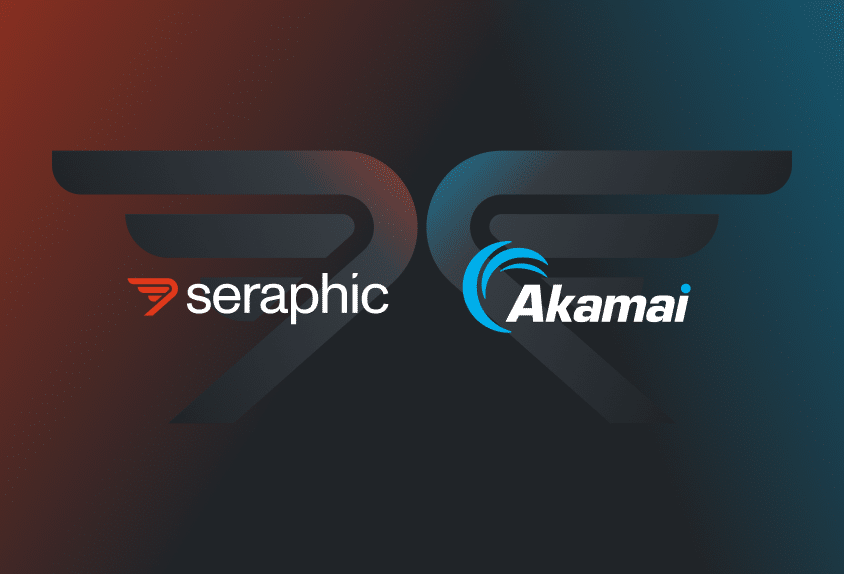The internet is undergoing a profound transformation. What began as a static collection of web pages evolved into dynamic applications. Now, with the advent of agentic browsers, we are on the cusp of an era where the browser itself becomes an intelligent, autonomous operating environment. This shift, driven by advancements in AI, presents exciting opportunities but also introduces a complex new landscape for cybersecurity. At Seraphic Security, we’re dedicated to understanding and addressing these emerging threats to ensure a secure digital future with advanced browser security.
What Exactly is an Agentic Browser?
Imagine a browser that doesn’t just display web content but actively understands your intent, reasons through tasks, and takes actions on your behalf. This is the essence of an agentic browser. Unlike traditional browsers that require manual navigation and clicks, agentic browsers integrate large language models (LLMs), memory, APIs, and user modeling to evolve from passive navigation tools into goal-driven decision engines.
Instead of you manually searching, clicking, and filling out forms, you’ll express your intent through natural language. The agentic browser then interprets, executes, and adapts, acting as an AI-powered assistant that can summarize, synthesize, search, fill forms, and take actions across websites. This represents a fundamental shift in user experience and system trust models.
Why the Sudden Surge in Agentic Browsers?
The rapid development of agentic browsers in 2025 is no coincidence. Several key factors are driving AI and model companies to build their own:
- Control the Interface: The browser is the most frequently used application in enterprises, acting as the gateway to user behavior, data, and workflows. Owning the browser means controlling the entire AI experience.
- Data Gravity: Browsers generate an immense amount of rich interaction data, which is crucial for training, fine-tuning, and aligning agentic models. Browser ownership provides first-party access to these invaluable insights.
- Vertical Integration: Companies like OpenAI (with Operator) and Google (with Project Mariner) are integrating their AI models directly into their browsers. This vertical integration allows for optimized performance, reduced latency, and enhanced user feedback loops.
- Defensive Moat: Embedding agents directly into browsers protects against platform risks. If major browser platforms were to block AI agents, owning the browser ensures continuity and control.
- Next OS Battleground: The browser is rapidly becoming the next-generation operating system. Agentic browsers shift user attention away from traditional applications and into prompt-based workflows, redefining where AI resides and how users interact with their digital environment.
The market projections underscore this importance: the agentic AI market is expected to reach $140.8 billion by 2032. We are also seeing a significant increase in “zero-click” Google searches, indicating a move towards AI synthesis and less traditional navigation.
The Landscape of Agentic Browsers
Several key players are already making significant strides in this space:
OpenAI’s Operator
Operator is OpenAI’s foray into agentic browsing, built atop Chromium and powered by ChatGPT. It enables autonomous task execution in the browser, such as researching topics, summarizing content, or navigating pages on the user’s behalf. By blending natural language prompts with browser-native actions, Operator pushes the boundaries of what assistants can do without user clicks. This deep integration raises new security considerations, particularly around permissions, trust boundaries, and how agentic behavior can be misused in sensitive environments.
Google’s Project Mariner
Google’s Project Mariner embeds its Gemini AI directly into Chrome, transforming the browser into an AI-first productivity platform. With capabilities like multi-tab control, contextual page editing, and AI-generated suggestions, Mariner aims to streamline workflows and reduce friction in digital tasks. This architecture signals Google’s ambition to redefine the browser interface itself. For enterprises, this shift introduces concerns around data residency, command injection, and how AI-driven features interact with sensitive or regulated web applications.
Opera Neon
Opera Neon represents a reimagination of the browser interface, focused on locally executed AI agents. Rather than relying heavily on cloud-based models, Neon emphasizes user creativity, with features like in-browser content generation and native multimedia manipulation. This approach reduces latency and enhances privacy, but also opens the door to threats from locally compromised agents. Enterprises must consider how unmanaged agent activity might interfere with data governance or lead to inadvertent data exposure within internal systems.
Perplexity Comet
Perplexity Comet aims to redefine how users interact with the web by eliminating traditional search and navigation patterns. Instead, users rely on a context-aware assistant that translates intent into direct actions — like summarizing an article or comparing data across sites. Comet replaces links and tabs with fluid, AI-driven workflows. While efficient, this model may obscure visibility into web traffic, making it harder for security teams to monitor activity or detect malicious redirection within agent-led sessions.
Dia (The Browser Company)
Dia is purpose-built for agentic interaction, featuring an AI-native interface that replaces traditional tabs with goals and memory-driven dialogue. It remembers past actions, summarizes content across sessions, and proactively assists with tasks like scheduling or drafting content. This shift to goal-oriented browsing blurs the line between user input and agent decision-making. While compelling from a UX standpoint, Dia’s memory and automation capabilities present unique attack surfaces, particularly in environments with strict compliance or data handling requirements.
Fellou & Nanobrowser
Fellou and Nanobrowser focus on automating complex web workflows, such as repetitive form-filling, content scraping, or task orchestration across multiple sites. These browsers are optimized for developers, power users, and productivity-driven teams. Their automation-first architecture introduces risks similar to those of bot frameworks — including abuse by adversaries for credential stuffing, session hijacking, or unauthorized data access. For organizations, it’s critical to monitor how such browsers are configured and ensure agentic actions are governed appropriately.
Why Agentic Browsers Are the New Weakest Link
While the benefits are clear, the autonomous nature of agentic browsers introduces significant new challenges regarding browser security. They mimic human users but often lack human-level awareness, judgment, or intent validation.
Here’s how agentic browsers change the game for cybersecurity:
- UI Misinterpretation Attacks: Agents may misread manipulated elements on a webpage, such as fake “submit” buttons or hidden fields.
- Prompt Injection & Shadow DOM Traps: Malicious prompts can “poison” agent instructions through hidden elements or context leakage, leading to unintended or harmful actions.
- Cross-Session Misuse & Data Leakage: Agents that carry memory between tabs or sessions can create identity or session persistence issues, and their form-filling capabilities increase the risk of sensitive data (PII/DLP) leakage.
- Shadow Task Hijacking: Compromise of a “middle-agent” can result in hijacked workflows, leading to fraud or unauthorized actions.
- Supply Chain Risk: External plugins or APIs invoked by agents (e.g., Stripe, Slack, OpenTable) expand the attack surface, creating new vulnerabilities within the supply chain.
- Chain of Trust Breakdown: When agents call tools, chain commands, and share memory, a single compromised step can infect the entire chain.
- Lack of Forensics & Oversight: Agent actions are often invisible to traditional monitoring tools, meaning no logs, alerts, or controls for critical activities.
- Regulatory Blind Spot: The processing of sensitive information (like PII under HIPAA/PCI) by agents without proper oversight can lead to severe regulatory violations.
The security implication is clear: As AI agents increasingly replace human users in browser workflows, they must be treated as first-class actors in the threat model. This requires robust policy enforcement, comprehensive telemetry visibility, behavioral monitoring, and memory isolation.
Cyber Attacks Targeting Agentic Browsers
Agentic browsers, with their AI-powered autonomy and integrated decision-making, are ushering in a new era of productivity. However, they also attract sophisticated cyber threats uniquely tailored to their capabilities. As these browsers handle more of the user’s intent and automate web interactions, attackers are rapidly adapting their tactics to exploit vulnerabilities specific to agentic browsers.
Prompt Injection and Manipulation
Unlike traditional browsers, agentic browsers act upon natural language instructions. Attackers can embed malicious prompts or hidden instructions within web pages, emails, or injected code. These prompts could redirect an agent to perform actions like leaking sensitive data or making unauthorized purchases, all while appearing innocuous to human users.
Browser Automation Exploits
Automation capabilities such as filling forms or executing workflows, expand the opportunity for attackers to craft pages that trigger agents into undesired actions. For instance, malicious pages might exploit the agent’s form-completion logic, manipulating it to transfer funds, send phishing emails, or submit personal information to attacker-controlled sites.
Memory and Data Leakage
Agentic browsers often retain memory across tabs, sessions, or tasks. If compromised, attackers can access previously entered credentials, personal identifiers, or sensitive enterprise information, amplifying both the reach and persistence of breaches. Memory persistence also increases the risk that agents will reuse leaked or poisoned data in future workflows.
Cross-Domain and Plugin Attacks
The integration of third-party APIs, plugins, and web automation tools introduces new supply chain risks. Agents might invoke compromised plugins or interact with hostile APIs, leading to data exfiltration or escalation attacks that a traditional browser would block or not automate.
The very features that make agentic browsers powerful—autonomy, memory, integration, and proactive action—open the door to new classes of cyber-attacks. Addressing these threats requires both rethinking browser security architecture and developing robust, AI-specific controls to safeguard digital autonomy.
Why Seraphic’s Browser Agent Is Even More Critical in the Agentic Browser Era
The rise of agentic browsers marks a pivotal moment in the evolution of the internet. As browsers evolve into autonomous, goal-driven agents, traditional visibility and control mechanisms collapse. Seraphic’s browser-native agent remains uniquely positioned in this new landscape; it operates at the deepest layer, monitoring every script injected into the JavaScript engine (JSE), including those executed by AI agents. This grants Seraphic unmatched telemetry and enforcement capabilities, enabling us to detect, control, and secure both human and agentic interactions. In an era where intent is expressed through AI, Seraphic ensures that execution still aligns with enterprise policy, integrity, and compliance.




